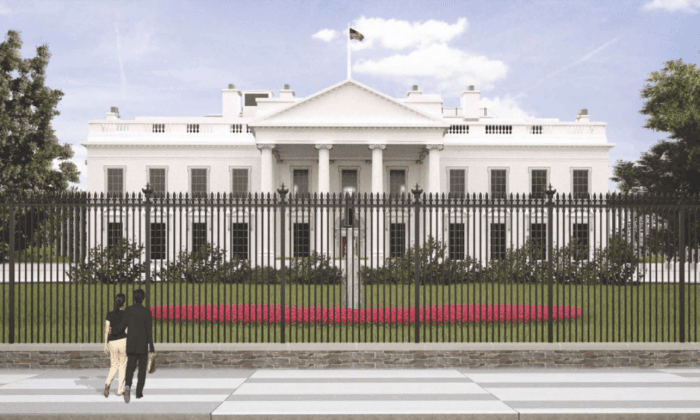The U.S. Secret Service proposes building a taller, stronger, and smarter fence around the White House that would be difficult to jump. It would include “anti-climb and intrusion-detection technology,” according to a joint release of the Secret Service and the National Park Service.
The current 6-foot fence would be raised to almost 12 feet, while the footing would be increased by around a third. The fence would still respect “the historical significance and visitor experience at the White House,” the release said.
The agencies will also present a plan for enhancing the fence around the U.S. Department of the Treasury and Eisenhower Executive Office Building.
On April 26 a man jumped the fence of the Eisenhower Executive Office Building, right next to the White House, putting it on a brief lock-down. The man was being pursued by a police officer after a suspected robbery when he jumped the fence.
The following day, the White House was put into another lockdown and another man was arrested after throwing “personal belongings” over the fence near the North Lawn of the White House.
On April 1, a man threw a backpack over the north fence of the White House and then climbed over, only to be arrested and charged with unlawful entry.
Last year, a man wearing the American flag jumped the White House fence and was immediately caught.
The last serious breach of the White House took place in 2014, when a man with a knife managed to enter the executive mansion before he was arrested.
The U.S. Secret Service and the National Park Service had rows of spikes installed last year as a temporary measure to keep people from climbing over the fence until a long term solution could be found.

The fence should be both beautiful and durable and feature security sensors bracketed to the fence posts every 30 feet, the presentation for the new fence says.
“The current fence simply is not adequate for a modern era. We’ve said that before. It is becoming more and more acutely clear that that is in fact the case,” Secret Service official Tom Dougherty said in a briefing to federal officials, according to NBC Washington.
The plan still needs to be approved by the National Capital Planning Commission that will hear the presentation on May 5.








Friends Read Free